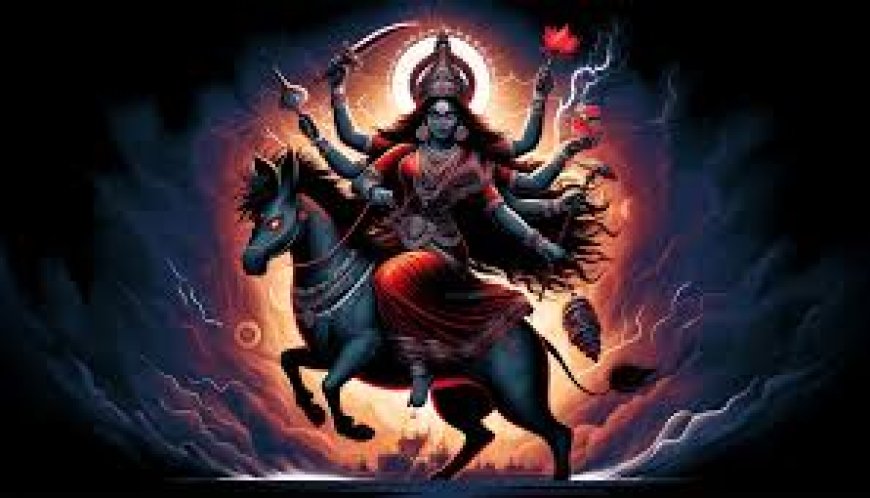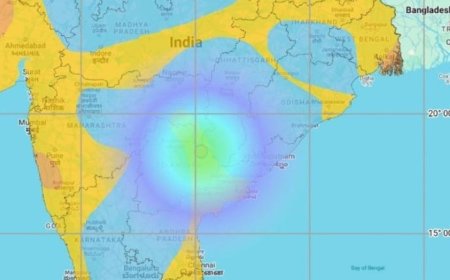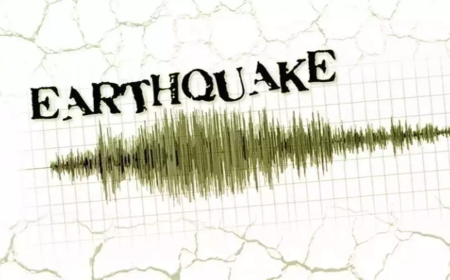The Legend of Goddess Kalaratri: Dark Power and Renewal, the Seventh Form of Navadurga
Explore the powerful story of Goddess Kalaratri, the seventh form of Navadurga, who embodies both fierce destruction and restorative energy. Delve into her divine narrative, understand her significance in Hindu mythology, and how her dark form signifies the ultimate victory of light over evil.

The Legend of Goddess Kalaratri: Dark Power and Renewal, the Seventh Form of Navadurga
In the spiritual tapestry of Navratri, the seventh day is dedicated to one of the most fearsome yet benevolent forms of Goddess Durga – Maa Kalaratri. Known as the goddess of destruction and renewal, her appearance is dark and terrifying, but her power symbolizes the triumph of good over evil. Kalaratri, a figure shrouded in mystery and awe, holds an irreplaceable place in Hindu mythology as the force that destroys darkness and ignorance, restoring balance in the universe.
Her tale is not merely a story of devastation but a journey of spiritual cleansing, where chaos is followed by the restoration of peace and righteousness. In this article, we explore the deep symbolism behind Goddess Kalaratri, her mythological significance, and how she is revered during the festival of Navratri.
1. The Fierce Appearance of Goddess Kalaratri
Maa Kalaratri is often depicted in a terrifying form, with her dark complexion resembling the deep night, embodying the destructive power necessary to defeat evil forces. Her disheveled hair, fiery red eyes, and three bloodshot eyes give her an appearance that evokes fear and awe simultaneously. She rides a donkey, symbolizing humility, while holding a sword in one hand and a deadly iron hook in the other.
-
Symbolism of Her Dark Form:
The black or dark blue hue of her skin represents the vast, eternal darkness that existed before creation. It’s a metaphor for the unknown and unseen forces in the universe that are crucial for balancing life. Despite her terrifying exterior, Kalaratri is also a bringer of peace and protection, eliminating all forms of fear. -
Her Four Arms and Their Significance:
In her four hands, she holds a scimitar and a thunderbolt, both representing strength and fierce determination. The other two hands are in the Abhaya and Varada Mudra, gestures of protection and blessing, reminding devotees that she is a mother figure who fiercely protects her children from harm.
2. The Mythological Story of Maa Kalaratri
The origins of Kalaratri’s emergence in Hindu mythology are tied to her role in fighting and defeating demons. One of the most significant tales associated with her is the slaying of the demon Raktabeej, who had the ability to multiply himself from every drop of his blood that touched the ground. This made him nearly invincible, as every wound he received would spawn more of him.
-
The Battle Against Raktabeej:
To counteract his regeneration powers, Goddess Durga invoked Kalaratri. In her terrifying form, Kalaratri drank the blood of Raktabeej before it could hit the ground, preventing him from multiplying. This fierce act of destruction marked her as the ultimate force that eradicated evil and restored balance to the world. -
Destruction for a Greater Cause:
Her role in the mythological tales illustrates that destruction is not always negative. Kalaratri’s destruction is necessary to pave the way for peace, truth, and righteousness. It’s a reminder that sometimes, in order to create, one must first destroy the forces of ignorance and darkness.
3. The Spiritual Significance of Worshipping Kalaratri
Maa Kalaratri is revered as a powerful force that destroys negative energies, ignorance, and darkness. Devotees worship her on the seventh day of Navratri, seeking her blessings for protection and strength. Her presence is a reminder that challenges and adversities, no matter how frightening, can be overcome with inner strength and faith.
-
Destroyer of Fear:
Kalaratri is called "Shubankari," meaning the auspicious one, despite her fearful appearance. She is known to eliminate fears from the hearts of her devotees and bless them with courage. She protects against dark forces and negativity, acting as a shield for those who worship her with devotion. -
Spiritual Cleansing and Renewal:
Worshipping Kalaratri is believed to cleanse the mind and soul of impurities, preparing the devotee for spiritual growth. It is symbolic of the soul’s journey through the darkest night to reach the dawn of enlightenment and peace.
4. Kalaratri in Navratri Celebrations
During Navratri, Maa Kalaratri’s day holds particular significance for those seeking spiritual transformation. The seventh night is considered a time of deep meditation and reflection, where devotees invoke the goddess to destroy their inner fears and obstacles.
-
Rituals and Offerings:
The rituals for Kalaratri involve chanting specific mantras dedicated to her, lighting oil lamps, and offering jaggery or sweets. Devotees believe that these offerings please the goddess, and she grants them protection and freedom from all suffering. -
The Spiritual Message of Kalaratri:
Kalaratri’s story is a reminder that darkness is not the end, but a phase that leads to new beginnings. Her energy signifies that destruction is often necessary to clear the path for creation and renewal. Her devotees celebrate her fierce form, knowing that behind her wrathful exterior lies immense compassion and protection.
5. How Kalaratri’s Story Resonates in Modern Times
Even in today’s world, Kalaratri’s legend resonates deeply. She is seen as a metaphor for overcoming the darkness within us—whether it be fear, ignorance, or negativity. In modern spiritual practice, Kalaratri symbolizes the fight against the destructive forces in our own lives, showing us that by facing our fears head-on, we can emerge stronger.
-
The Goddess of Inner Strength:
Kalaratri’s presence in Hindu mythology reminds us that facing adversity with courage is essential for growth. She empowers devotees to destroy their inner demons, to clear the path for peace, wisdom, and ultimate self-realization. -
Her Message for Women:
Kalaratri’s fierce, protective nature is especially inspiring for women. In her, they see a role model who is unafraid to take on the darkness and fight for justice. She stands as a symbol of feminine power, one that is nurturing yet fiercely protective when needed.
6. Conclusion: The Divine Power of Maa Kalaratri
Maa Kalaratri, the dark goddess of destruction and renewal, holds a unique place in Hindu mythology as a protector of the good and destroyer of evil. Her fierce form may evoke fear, but her divine energy is one of protection, wisdom, and spiritual transformation. As the seventh form of Navadurga, she represents the deep spiritual journey through darkness to reach enlightenment.
The worship of Maa Kalaratri during Navratri reminds us that destruction is often necessary for the birth of new beginnings. It is through facing our fears, clearing away ignorance, and embracing the unknown that we find the strength to grow, renew, and rise.
What's Your Reaction?

























































